Two days ago, following a surprisingly unproductive visit to Bear River MBR, I stopped at a parking lot to stow my photo gear and pull my driver’s side mirror back into place before the long drive home. But a bizarre-acting male Yellow-headed Blackbird delayed those activities for quite a while.
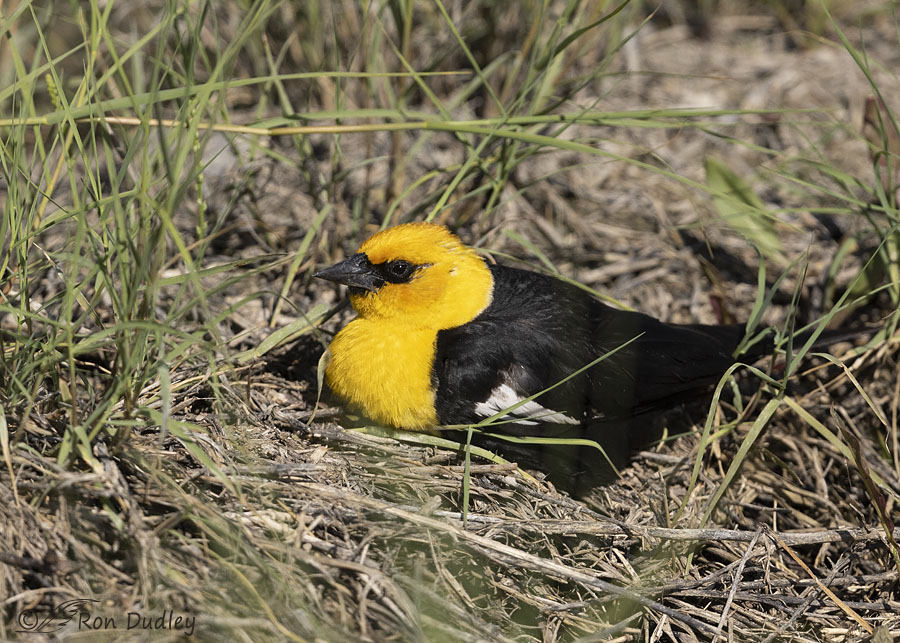
He landed right in front of me and almost immediately laid down in the grass.
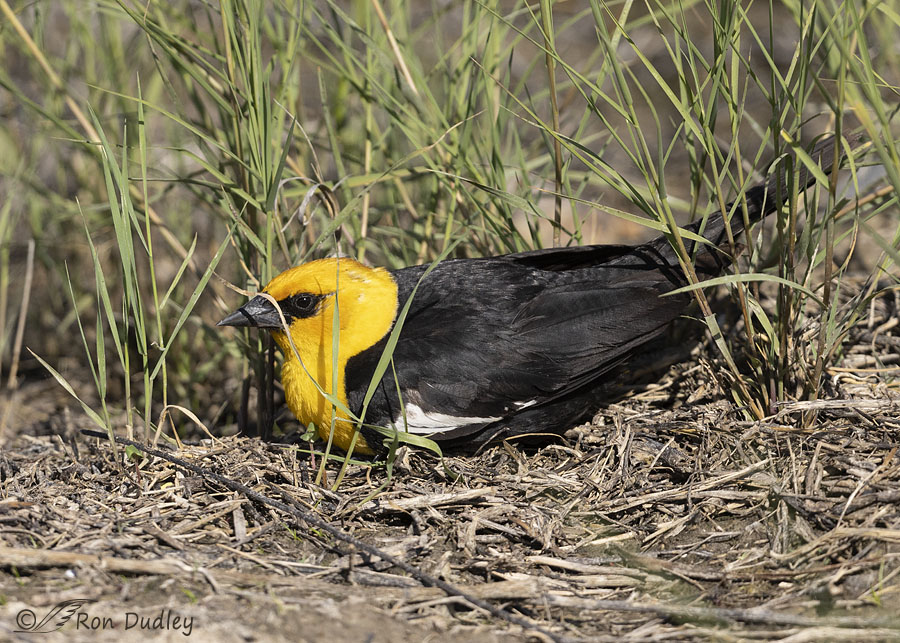
He repeatedly did the same thing after getting back up and walking to different nearby places. While he was laying in this spot he…
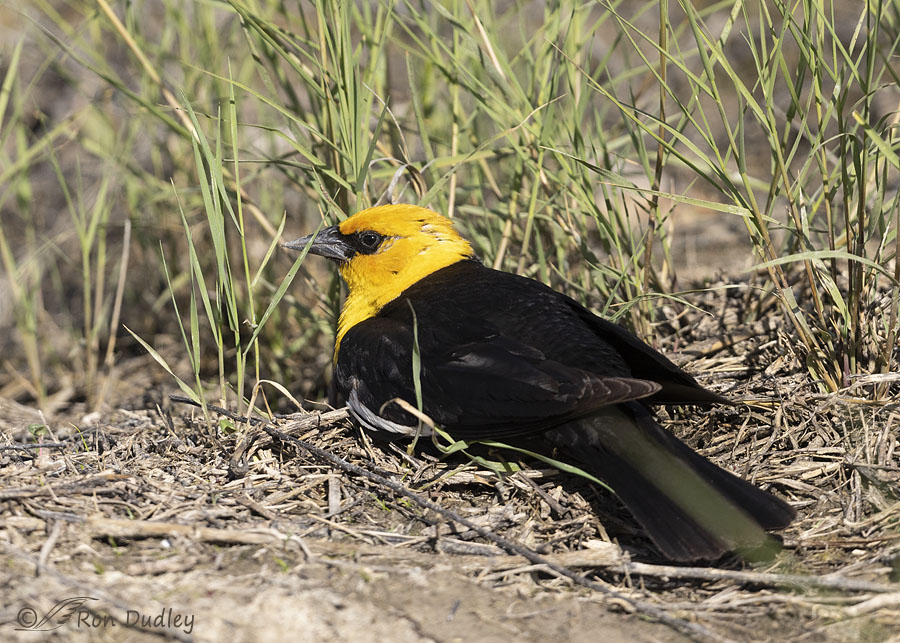
stood up, turned his body to a different angle and laid right back down again.
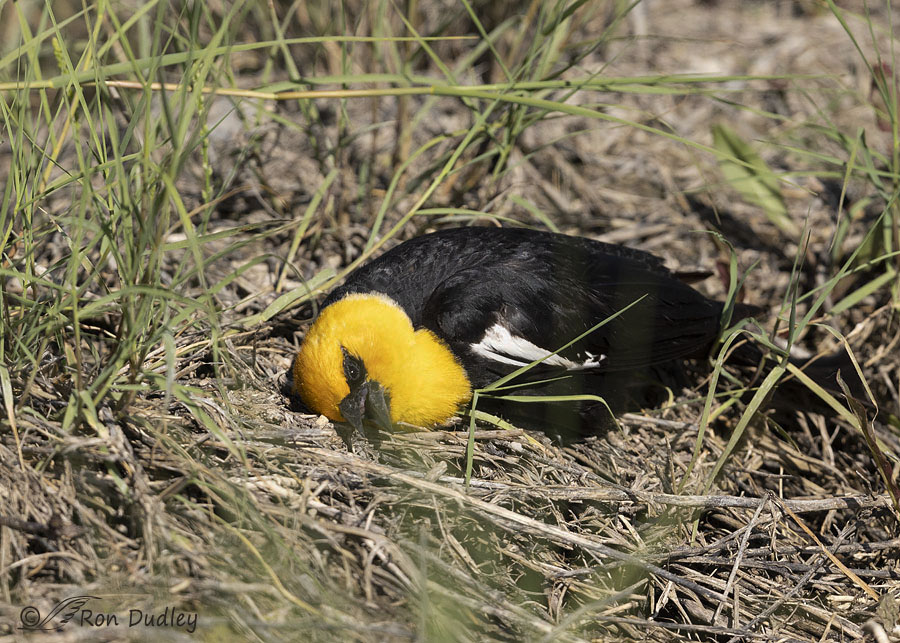
Several times he flattened his body to the ground as much as he could and rubbed his face into the dried grasses.
Here he’s doing it again, this time and several other times he appeared to be burying his bill in the ground.
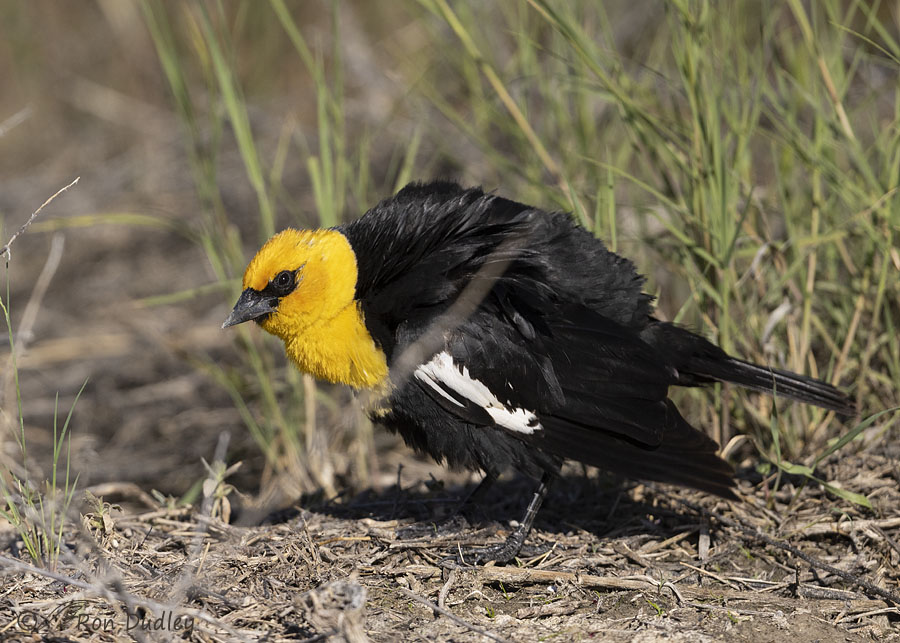
He also roused a couple of times as he was walking from place to place. He didn’t appear to be looking for insects or other food.
He repeated each of these activities for nearly 12 minutes before eventually flying off. At the time I thought he might be anting but when I got home I zoomed in on dozens of my high resolution photos of him (especially when he was squatted down) looking for ants, on him or on the ground, and never spotted a single one.
Other than these strange behaviors he appeared to be perfectly healthy. At times he would show appropriate alertness toward other birds in the area and when he flew off he appeared to do so normally.
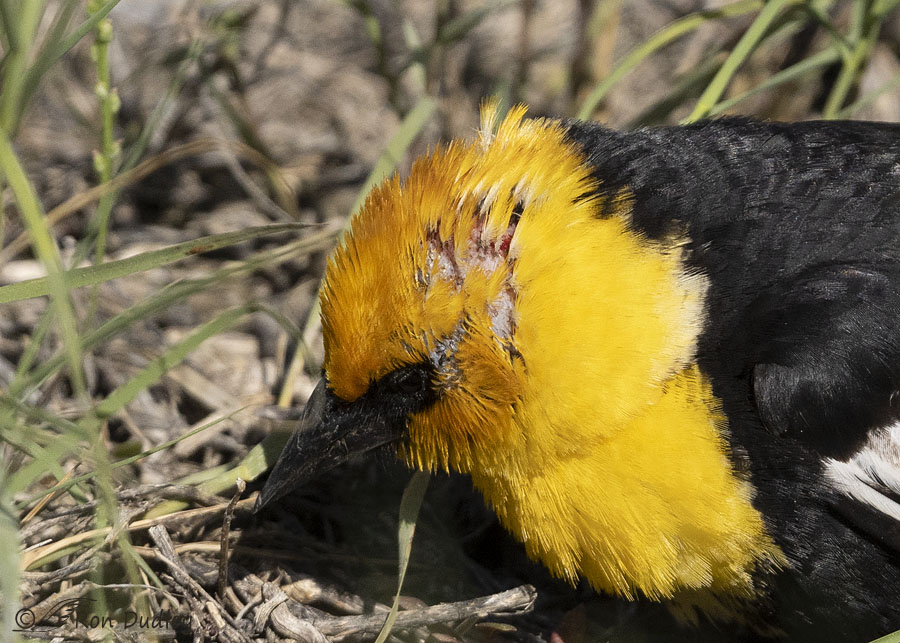
The only other thought I had that might explain his behavior (other than anting) was that it might be related to the fact that he was beginning to molt. In some of my photos the bare skin on his head looked even more patchy-red, scaly and irritated than it does here. But I’m having a hard time connecting molting to these behaviors. Could the irritated skin be caused by mites or other ectoparasites?
I’ve spent a lot of time around birds over the years and this combination of behaviors was a new one for me, for any species. Any thoughts about what might explain it?
Ron


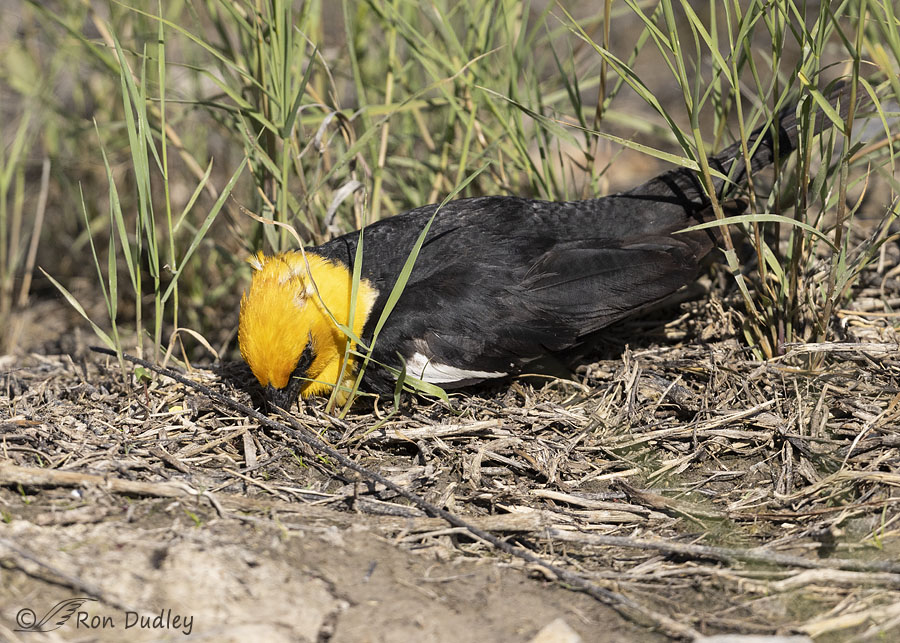
What was the temperature like? Looks to me like an odd sunning behavior but…
Steven, low 60’s at about 10 AM. But they sometimes sun for its effect on ectoparasites rather than to help them warm up.
Thanks to Dan Gleason for the fascinating explanation of “anting”, passive and active!.
The California Quail who visit our yard assume a similar posture when they are dust bathing (especially the females). They really scooch down into their dirt depressions and roll all around, sometimes almost upside down, rubbing their heads and faces, flinging dirt all over their bodies. They just look ecstatic during this, and there’s always vigorous preening after these baths. I wonder, is this also a type of ectoparasite control?
This guy sure looks uncomfortable in the closeup!
Carolyn, California Quail do the same thing in my garden. When they do I have at least much fun watching them as they seem to be having.
I am of course (unsurprisingly) clueless. What a fascinating thing to see. And the responses are so very interesting. If it is parasites I hope they can be banished.
Let’s just hope it isn’t, EC.
Hard to tell without the bird in hand. There are parasites, and fungal infections that cause skin irritation. Could also be a wound or injury with healing skin and growing in new feathers. It looks like some of the feathers are new and emerging from the shaft. This is not the usual time for a molt, he should be done and in full breeding plumage now. Either way it looks like he is dealing with it in bird fashion, exposing the area to sun
April, he IS in full breeding plumage and has been for some time. I believe he’s beginning to molt out of breeding plumage, not into it. For this species, that molt begins in June.
Great series!
Charlotte Norton
Thanks, Charlotte.
Fascinating behavior. I wish I had been there to see it directly. I thought anting at first but it didn’t seem quite right. With passive anting a bird usually flattens itself over an ant hill and spreads its wings to allow ants to wander through all of the plumage, attacking parasites as they go. During active anting, ants are taken in the beak, squeezed to release formic acid and then spread through the feathers. I’ve watched California Scrub-Jays do both. But the posture in this bird is just not. right for either behavior. I’ve also seen birds orient to the sun and spread their feathers. The direct sun can make ectoparasites uncomfortable and they release momentarily to seek a less sunny area of the body. Then the bird can grab and discard them. That doesn’t appear to be the case with this bird either. I’ve photographed Dark-eyed Juncos doing this but the posture and spread of plumage is different from what you photographed. So I would guess (and only a guess) that you are right and it is related to irritation caused by molt or ectoparasites. Fascinating to see whatever the explanation.
Thanks for adding your thoughts, Dan.
This bird would spread its wings occasionally but only slightly and only for a few seconds.
Excellent photos. Very strange behavior. Hopefully one of your bird expert followers will have seen this behavior before and can identify it. If I saw him lie down like that I would think he was going to die.
Thanks, Everett. I’m hoping that Dan Gleason weighs in on this.
Super interesting! I have no suggestions. But I do have a question: is “psammophile” a word you have ever heard or seen? It was the winning Spelling Bee word yesterday. Kid spelled it correctly and won 50 grand.
Thanks, Sue.
I read about that kid this morning on CNN and saw the word he spelled correctly for the win. I’ve only heard of it in this form – “psammophyte” – a plant that prefers sandy areas. Apparently psammophile refers to any organism, plant or animal, that prefers sandy areas.
My main thought when reading the article was how impressive it was that the kid came up with the “ps” spelling for the “s” sound, especially since I suspect he’d never actually heard of the word.
I thought you might be familiar with it as it is obviously a biology thing. As for his knowing about the “ps” beginning, remember they get and obsessively study the lists of words, so he probably had seen it and learned it at some point. “psammophyte” would’ve been even harder, I think. I love the kids who compete in the Bee.
It looks localized. Contact dermatitis/allergic reaction to some plant or synthetic chemical?
“It looks localized.”
Lyle, that’s why it makes me think it might be a molting thing. When this species molts it seems to be most obvious on the head. Sometimes their head is a largely bald, irritated mess. Molting can cause the skin of birds to become inflamed and itchy. That’s why some birds, falconer’s birds for example, become “grouchy” during the molt.
Have no idea tho the head does look ugly like he’d been scratching at it – perhaps mites as you opined, or something else irritating got to him?
Amaranth is up – BOY is it hard to see on our “gray” soil – glad I caged it until they got going!
“Amaranth is up”
Delighted to hear it, Judy. Yesterday I finally thinned mine down to one plant every 18″ or so. Many thousands of seedlings were sacrificed during the process.